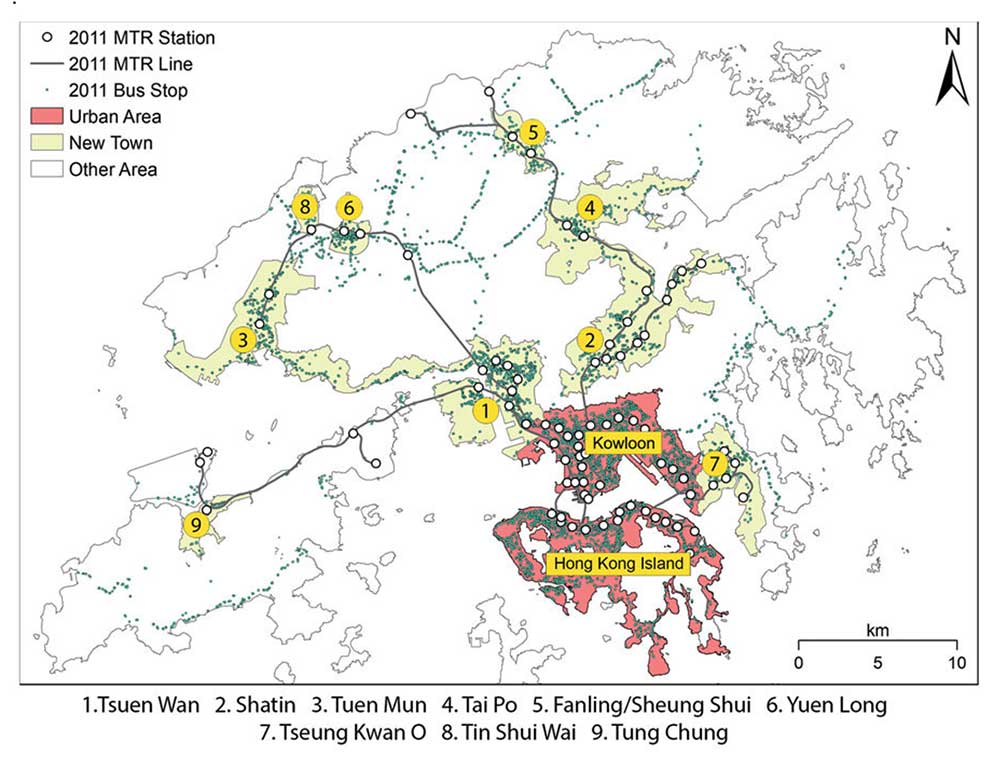Uncovering JAPA
New Towns and the Struggle for Work-Life Balance

Over this year, the line between work and private life has blurred as many have been fortunate to be able to work from home during the pandemic. This blur has not been a reality for all as many essential workers must still leave their homes to work. But when we return to something that resembles pre-COVID life, work-life balance and commute times to work will continue to be an essential question for spatial planning.
Commute Impact on Work-Life Balance
In "Evaluating Hong Kong's Spatial Planning in New Towns From the Perspectives of Job Accessibility, Travel Mobility, and Work–Life Balance" (Journal of the American Planning Association Vol. 86, No. 3), authors Sylvia Y. He, Sui Tao, Mee Kam Ng and Hendrik Tieben studied the planning of new towns and their spatial proximity to the places where residents work in Hong Kong. The authors found that job accessibility influences commute times and suggest that this could negatively affect work-life balance since many workers are required to use significant portions of their time commuting to work. The further implications of this study are for planners to more thoughtfully consider the spatiality of various forms of work on a regional scale.
The authors relied on household travel survey data from 2002 and 2011 to investigate this question around work-life balance with a particular focus on the residents of new towns as compared to residents in other urban areas. Hong Kong is a provocative site to choose for this study due to the development of new towns in the last few decades based on the model of the former colonial power, the United Kingdom. The need to develop new towns arose out of the rapid increase in the population on the island and the population's concentration in existing, central urban areas. This, in turn, created an imbalance in job accessibility across the city.
Economic restructuring in Hong Kong has led to a reduction in manufacturing jobs, negatively affecting the ability of new town residents to find accessible jobs, and thus, increasing their commutes to urban areas for work. This study hinges on differentiating between this issue — the commute of residents in new towns to urban areas for work, as compared to the commute of residents in urban areas to their places of work. The authors conclude that the commutes of residents in new towns are affecting their ability to balance work-life, particularly for workers who care for children or elderly family members.

Figure 1: Area of study.
New Towns' Role in Urban Planning
This study raises questions about new towns having enough accessible employment opportunities to support their residents. These are questions that planners should consider if de-densifying urban areas is pursued in some places.
This research presents further opportunities to examine planning and its link to changing political systems and planning more mobile cities. Because of the pandemic, will new-town planning to decentralize urban areas be put into practice in various places around the world? Even without this consideration, it is essential for planners to think about the functionality of the city as a whole, even for those who do not technically live in the core city, but must commute to the city for work.
Top Image: baona/iStock/gettyimages.com.


